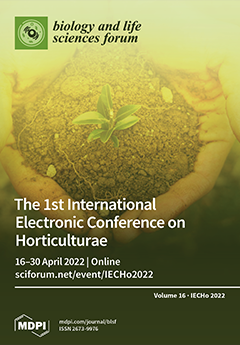Potato (
Solanum tuberosum L.) is one of the most important staple food crops and one of the most consumed food crops worldwide. As such, it is a suitable food matrix for biofortification studies, namely, with Ca, as it is an essential mineral
[...] Read more.
Potato (
Solanum tuberosum L.) is one of the most important staple food crops and one of the most consumed food crops worldwide. As such, it is a suitable food matrix for biofortification studies, namely, with Ca, as it is an essential mineral for plant growth and development, it being required for several structural issues. In this context, this study aimed to monitor the mineral content and location of Ca and other essential minerals (K, P, S, Fe, and Zn) and assess some quality parameters (color of the pulp, total soluble solid, and dry weigh content) in tubers of
Solanum tuberosum L. (Agria variety), after three months of storage, submitted to a Ca biofortification process with four foliar sprays with three concentrations of calcium nitrate (0.5, 2, and 4 kg·ha
−1) and two concentrations of calcium chloride (3 and 6 kg·ha
−1). It was found out that, in most treatments, Ca, K, P, S, Fe, and Zn have higher contents in the epidermis region and that control tubers showed a lower dry weight content compared to the biofortified ones. Moreover, after three months of storage, naturally enriched tubers maintain a preferential accumulation of Ca in the epidermis region (as seen in the harvest) and showed a decrease in the dry weight content in the control and biofortified tubers (compared to the harvest data). Additionally, no significant differences were observed in the colorimetric parameters of the pulp tubers and in the total soluble solid content, presenting similar data to the harvest ones. In conclusion, the storage process of biofortified tubers affected a quality parameter—dry weight content—that is relevant for industrial processing and a criterion for potato tubers classification. In this context, only the Ca(NO
3)
2 2 kg·ha
−1 and CaCl
2 3 and 6 kg·ha
−1 treatments were suitable for industrial processing after 3 months under storage conditions.
Full article



